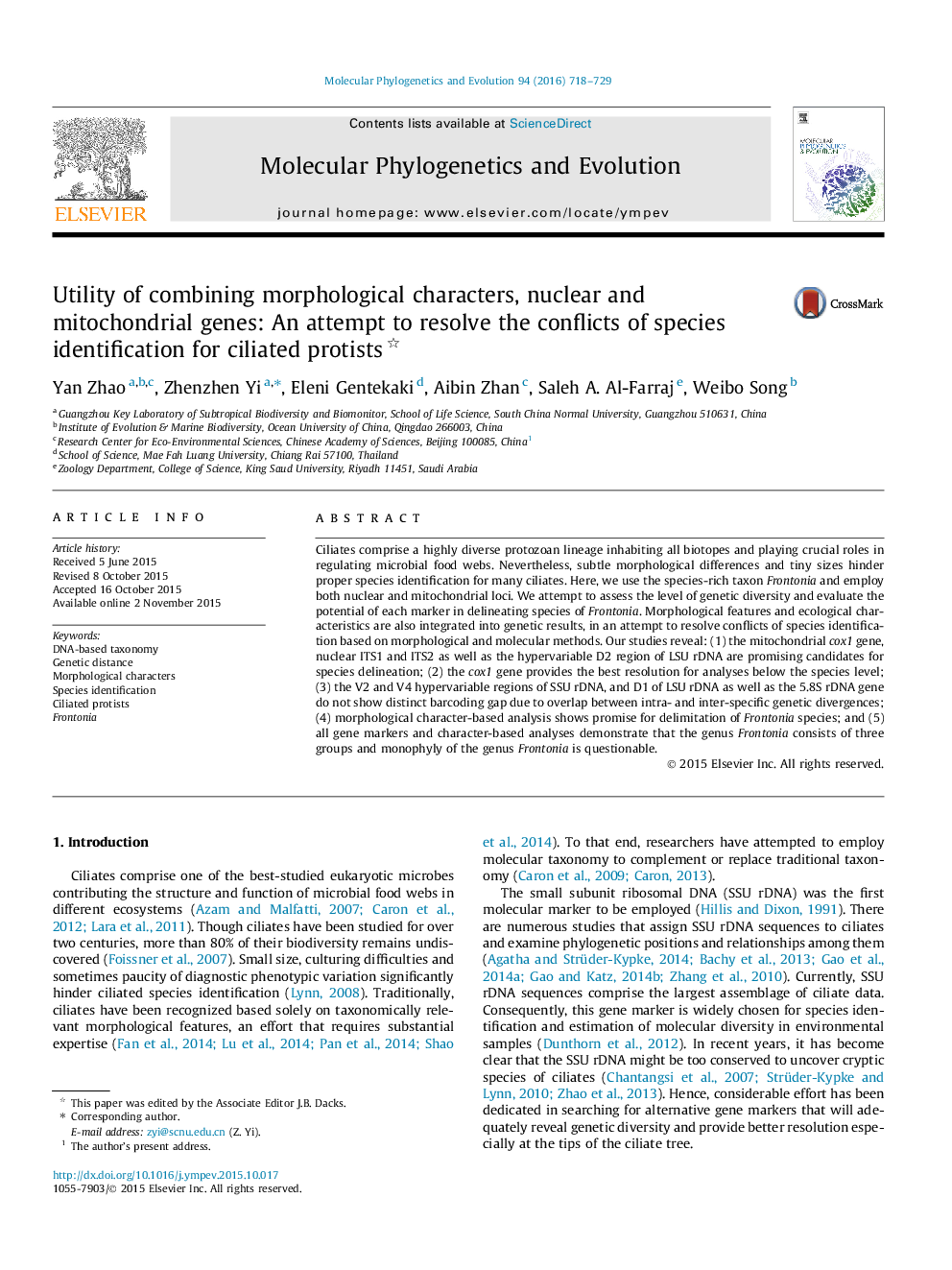| کد مقاله | کد نشریه | سال انتشار | مقاله انگلیسی | نسخه تمام متن |
|---|---|---|---|---|
| 5918611 | 1164241 | 2016 | 12 صفحه PDF | دانلود رایگان |
- LSU rDNA-D1, ITS1, ITS2 and cox1 are promising for DNA-based taxonomy of ciliates.
- Cox1 provides best resolution for classifying relationships among populations.
- Mapping characters on genetic trees is useful for species identification.
- The genus Frontonia is composed of three well outlined groups.
Ciliates comprise a highly diverse protozoan lineage inhabiting all biotopes and playing crucial roles in regulating microbial food webs. Nevertheless, subtle morphological differences and tiny sizes hinder proper species identification for many ciliates. Here, we use the species-rich taxon Frontonia and employ both nuclear and mitochondrial loci. We attempt to assess the level of genetic diversity and evaluate the potential of each marker in delineating species of Frontonia. Morphological features and ecological characteristics are also integrated into genetic results, in an attempt to resolve conflicts of species identification based on morphological and molecular methods. Our studies reveal: (1) the mitochondrial cox1 gene, nuclear ITS1 and ITS2 as well as the hypervariable D2 region of LSU rDNA are promising candidates for species delineation; (2) the cox1 gene provides the best resolution for analyses below the species level; (3) the V2 and V4 hypervariable regions of SSU rDNA, and D1 of LSU rDNA as well as the 5.8S rDNA gene do not show distinct barcoding gap due to overlap between intra- and inter-specific genetic divergences; (4) morphological character-based analysis shows promise for delimitation of Frontonia species; and (5) all gene markers and character-based analyses demonstrate that the genus Frontonia consists of three groups and monophyly of the genus Frontonia is questionable.
282
Journal: Molecular Phylogenetics and Evolution - Volume 94, Part B, January 2016, Pages 718-729
